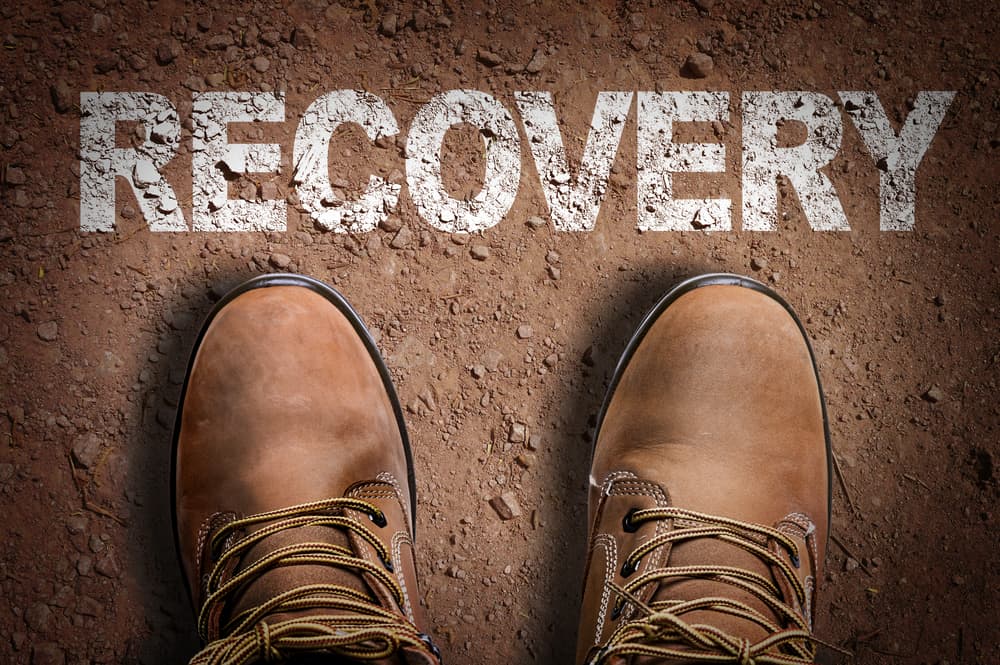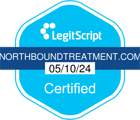Opiates are narcotic analgesics (extremely powerful and highly addictive painkillers) containing opium naturally derived from poppy plants. Similarly, opioids are narcotic analgesics made from synthetic ingredients. That being said, many people use the terms interchangeably, as they’re both exceedingly potent and habit-forming drugs. The effects of opiates on the body can result in severe changes.
If you or a loved one are chemically dependent on opiates, detoxification at a drug rehabilitation center is likely a necessary first step to sobriety through an addiction treatment plan. What does the detox timeline for opiates look like? Although the process of detoxing is different for everyone — especially in terms of how long it takes — the stages are often the same. Here’s what you can expect from opiate detox, beginning with withdrawal.
Opiate Withdrawal Symptoms Timeline
Even if opiate consumption starts with a prescription, misuse is common, resulting in long-term effects of opiates. Not only that, but ongoing and excessive use can lead to tolerance and addiction. When someone is chemically dependent on opiates, going without a regular dose can lead to withdrawal symptoms — whether or not they intend to begin opiate detox. Here’s a breakdown of the opiate withdrawal timeline, including when to expect each stage to set in.
Anticipatory Phase (4–5 Hours)
Roughly four to five hours after using opiates, the anticipatory phase of withdrawal will hit. During this stage, many addicts begin to experience heightened anxiety associated with going without drugs, especially if they’ve gone through drug withdrawal before. Users will also start to crave opiates and battle internally with the urge to take or acquire more drugs.
Early Acute Phase (7–10 Hours)
Within seven to ten hours following the last dose of opiates, users will experience more cravings and anxiety, along with restlessness. During the early acute stage, addicts might also begin to have flu-like symptoms, like body aches, sweating, upset stomach, nausea, or vomiting. At this point, the urge to use drugs again will be even stronger, as taking more opiates would be a short-term (albeit dangerous) solution for alleviating the extreme discomfort of drug withdrawal.
Fully Developed Acute Phase (24–72 Hours)
One to three days after using opiates, withdrawal symptoms will reach a peak. During the fully developed acute stage, addicts usually endure even worse flu-like symptoms, as well as body tremors, elevated blood pressure, and insomnia. At this point, you can also expect opiate cravings to be at peak levels.
During any stage of the opiate withdrawal timeline, other symptoms may include:
- Agitation
- Chills
- Delirium tremens (DTs)
- Depression
- Diarrhea
- Fever
- Hallucinations
- Headaches
- Muscle cramps
- Seizures
- Shaking
- Suicidal thoughts
The most extreme withdrawal symptoms should begin to subside after about three days. However, for up to a couple of years or more after using opiates, many continue to have sporadic cravings, mood swings, anxiety, trouble sleeping, and difficulty concentrating.
If you or a loved one has reached chronic signs of opiate use, then going cold turkey will most likely lead to withdrawal. Having said that, some individuals experience withdrawal symptoms when they build a tolerance and require a higher dose to achieve the effect they crave.
Timeline for Opiate Detox
For those on the journey to recovery, withdrawal and detox often coincide. Also, similar to opiates and opioids, some people use the terms interchangeably. If you go to a detox program for opioid addiction, you’ll experience withdrawal as part of the detoxification process.
When symptoms reach their peak during the fully developed acute phase of the opiate withdrawal timeline, they should start to taper off. This tapering off is a fundamental component of detox, as it can help addicts to see that their suffering won’t go on forever — almost like a light at the end of the tunnel.
As detoxification comes to an end, many symptoms subside while others become much less intense. In a clinical setting, the individual’s status will be assessed at this point to determine whether they’re ready for the next steps of recovery.
When a person abuses opiates and then discontinues drug use, the body starts to rid itself of toxins. Additionally, both the brain and body must relearn how to function without narcotics. The detoxification process is extremely challenging, but it’s a necessary component of the journey to sobriety and long-term health.
The Importance of Medical Detox
Many individuals with opiate addiction are tempted to detox at home, which can be dangerous for a number of reasons. We strongly suggest a medically supervised detox program, as withdrawal symptoms can be extremely difficult to manage at home. Some of the most severe symptoms —such as delirium tremens, seizures, and hallucinations — can be fatal in some cases, particularly without medical supervision. Moreover, facing the peak severity of these symptoms at home can lead to a relapse, as using opiates again would provide short-term relief.
With Northbound Treatment’s detox program in Orange County, patients are closely monitored by our clinical staff throughout every stage of the opiate withdrawal timeline. They receive immediate care to address each symptom and reduce the likelihood of a relapse. Additionally, all clients receive individualized treatment that fits their unique needs while keeping them safe and comfortable.
To say detox is difficult would be an understatement, but it’s even harder to face alone. The team at Northbound understands the immense challenge of getting through withdrawal symptoms, as well as how crucial it is to ensuring recovery and long-term sobriety.
How Long Does Opiate Detox Last?
As we mentioned, the best way to detox from opiates is different for everyone, and the duration varies. Generally speaking, how long detox lasts depends on the nature of the substance abuse. For instance, a person who takes several opioid painkiller pills a day for two years will probably take longer to detox than someone who takes a couple of pills a day for six months. The specific drug a person has been using is also a factor.
Some of the most common opiate and opioid drugs include:
- Codeine
- Fentanyl
- Heroin
- Hydrocodone (Vicodin)
- Hydromorphone (Dilaudid)
- Meperidine (Demerol)
- Methadone
- Morphine
- Oxycodone (OxyContin)
- Propoxyphene (Darvon)
Detox can be over within a few days, but in some instances, it can take a couple of weeks. However, individuals typically spend somewhere between a week to ten days in a detox program.
Also, withdrawal symptoms tend to be more severe and last longer with at-home detoxification. This is because, with medically supervised detox, clinical specialists are there to help mitigate symptoms. For example, those experiencing excessive sweating or fever might receive intravenous fluids, which would help replenish lost fluids and regulate their body temperature.
Detox & Rehab Programs from Northbound
In the grand scheme of recovery, detox is relatively short — but that doesn’t mean it shouldn’t be taken seriously. Detoxification is an important stepping stone to achieving sobriety, regaining health, and finding happiness. With that said, proper supervision and mental health treatment are vital components of preventing relapse.
Northbound Treatment is a fully licensed detoxification and rehabilitation center, and we’re proud to offer our clients a safe, comfortable, and clinically supervised detox program. We’re dedicated to providing an environment where individuals can get sober, overcome withdrawal symptoms, and begin their journey to healing.
Residential & Outpatient Treatment Programs
Northbound Treatment’s gender-responsive inpatient rehab programs are customized to fit the unique needs of each client and designed to help them discover hope, recover from drug addiction, and live a free life. We also offer outpatient programs, including intensive-outpatient programs, in which clients receive addiction treatment while living at home. Additionally, Northbound provides telehealth outpatient services to serve our clients remotely.
Dual Diagnosis Treatment
Many of Northbound’s patients have a dual diagnosis (or co-occurring disorders), meaning they struggle with both substance abuse and a mental health condition, such as depression, anxiety, PTSD (post-traumatic stress disorder), OCD (obsessive-compulsive disorder), borderline personality disorder, bipolar disorder, or codependency. Dual diagnosis treatment takes an integrated approach to drug addiction recovery by addressing all factors at play. With a comprehensive recovery plan, clients are better equipped to sort out their mental and emotional problems, achieve sobriety, find themselves, foster healthy relationships, and live a happy, fulfilled life.
Addiction Support & Aftercare Services
Northbound Treatment is committed to supporting our clients throughout every stage of their long-term recovery journey. In addition to comprehensive detox and rehabilitation, we offer addiction support and aftercare services for those who’ve graduated from our rehab programs. This helps them adjust to the realities of sober living, which can come as a shock for many.
Northbound Is Here to Help
For those looking to begin a detox program, worrying about insurance coverage or paying for treatment should be the last thing on your mind. Northbound is an in-network provider for most major insurance companies. Our knowledgeable insurance specialists can help you navigate your policy and determine your options for treatment, and we can help you find a payment solution that fits your needs.
If you or someone you love is struggling with opiate addiction, please reach out to Northbound Treatment today. To start the admissions process, call us (844) 919-0403 or fill out our online form.
Sources:
- Case-Lo, Christine. “Opioid and Opiate Withdrawal: Symptoms and Treatments.” Healthline.com. N.p., 25 Sept. 2012., https://www.healthline.com/health/opiate-withdrawal
- Jacques, Erica. “How Long Does Withdrawal from Opioids Last?” Verywellmind.com. N.p., n.d., https://www.verywellmind.com/opioid-withdrawal-2564485
- Alexander, Paul. “Understanding Opioid Addiction: Signs, Symptoms and Examples of Opioids | Northbound – Living Sober.” Northboundtreatment.com. N.p., 23 Apr. 2019., https://www.northboundtreatment.com/blog/understanding-opioid-addiction-signs-symptoms-and-examples-of-opioids/
Author
-

President, CEO & Founder at Northbound Treatment Network
Paul Alexander is the CEO, President & Founder of Northbound Treatment Network in Newport Beach, California. He believes wholeheartedly in transformational leadership, organizational health and effective, fully integrated substance use disorder and mental health treatment. With over 27 years of experience in behavioral healthcare, Paul has extensive knowledge of “in vivo” treatment modalities, clinical development, operations, strategy, marketing and financial planning. He has been widely recognized for his development of collegiate-based residential treatment programs for students in recovery and authored a research study at The University of California confirming this modality’s effectiveness.
Paul’s comprehensive professional experience, willingness to innovate, and emphasis on organizational health are vital factors in Northbound’s continued success. Paul received his Certified Addiction Treatment Specialist training at Saddleback College in Mission Viejo, CA, and was awarded Outstanding Alumni Service Award in 2002. Paul holds a Bachelor of Arts degree in Criminology, Law and Society, Summa Cum Laude, from University of California, Irvine, and a Juris Doctorate degree from Loyola Law School of Los Angeles. Paul currently serves on The National Association of Addiction Treatment Providers (NAATP) board. In addition, he serves on The Family Recovery Foundation board and The CarePossible board in Orange County; both organizations are committed to raising funds for family recovery and treatment for former military personnel. Paul is in recovery himself and lives in Orange County with his wife Silvana and his two young sons, Noah and Dean.










